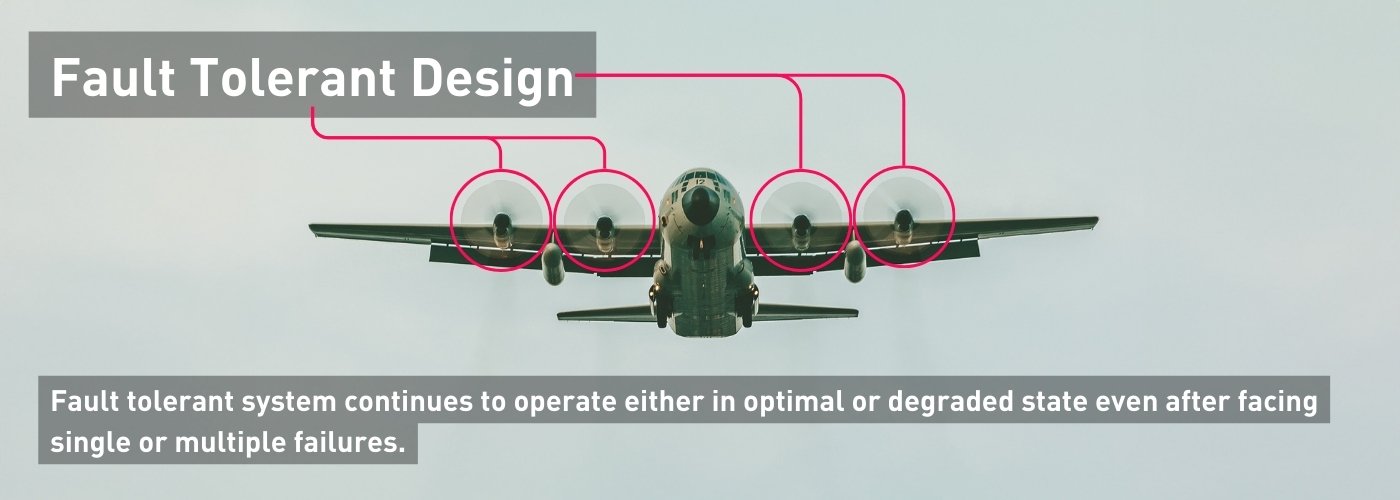Have you ever wondered how major websites like Google or Facebook manage to stay up and running even during peak traffic hours? It’s all thanks to fault tolerance and high availability mechanisms working behind the scenes, silently ensuring smooth operations without any noticeable glitches or downtime. But what exactly are these terms, and what differentiates them from one another? We’ll uncover the secrets of fault tolerance and high availability, unraveling their distinct characteristics that make them indispensable for businesses operating in today’s fast-paced digital landscape.
Fault Tolerant vs High Availability

Fault tolerant and high availability are two distinct concepts in the world of technology, although often used interchangeably. Fault tolerance refers to a system’s ability to continue operating even in the event of component failures.
It relies on duplicate or redundant hardware or software components that can seamlessly take over if one fails, ensuring uninterrupted functionality.
On the other hand, high availability refers to a system’s ability to provide uninterrupted access and service to users at all times. It involves measures such as load balancing, failover mechanisms, and data replication across multiple servers.
While fault tolerance focuses on eliminating single points of failure within a system, high availability aims for zero downtime and maximum uptime for end-users. Fault-tolerant systems are more commonly found in critical cloud applications where any interruptions could lead to significant financial loss or put lives at risk.
In contrast, high availability is essential for systems that require constant accessibility, like e-commerce websites or online banking platforms.
It is important to note that while fault-tolerant systems can contribute to achieving high availability, they are not synonymous terms. High availability encompasses various aspects like redundancy, load balancing, clustering techniques that go beyond just replicating components – since faults may occur in other parts than those being duplicated – maximizing resilience against any disruption that could hinder user experience or business continuity.
What Is Fault Tolerance In Cloud Computing?

Fault tolerance in cloud computing refers to the ability of a system or service to withstand and recover from failures or disruptions without affecting the overall performance.
In other words, it ensures that critical applications and data remain accessible even in the face of hardware failures, network outages, or other technical issues. To achieve fault tolerance, cloud providers often employ various techniques such as redundancy, replication, and automated disaster recovery systems.
One common approach to achieving fault tolerance is through the use of redundant components in a cloud infrastructure. By deploying multiple instances or replicas of servers or storage devices across different physical locations or availability zones, the system can continue functioning even if one component fails.
This not only increases reliability but also allows for load balancing and uninterrupted service delivery.
Moreover, fault-tolerant systems often feature automated monitoring and self-healing capabilities that can detect failures in real-time and take appropriate actions to mitigate their impact.
For example, if a server goes offline unexpectedly due to a hardware issue, the fault-tolerant system can automatically redirect user requests to an available backup server without any noticeable disruption.
By proactively anticipating failures and rapidly recovering from them, fault-tolerance helps ensure continuous operation and seamless user experience in cloud computing environments.
What Is High Availability In Cloud Computing

High availability is an essential aspect of cloud computing that ensures continuous access to applications and services, even in the face of hardware or software failures. It goes beyond simply backing up data; rather, it focuses on maintaining seamless operations by automatically detecting and recovering from any potential disruptions.
In other words, high availability guarantees minimal downtime and maximum performance in a cloud environment.
One way high availability is achieved is through redundancy. By duplicating resources such as servers, networks, and storage components across different geographic locations or data centers, organizations can eliminate single points of failure.
This means that if one server fails or goes offline, another server immediately takes over to ensure uninterrupted service. Moreover, load balancing techniques further enhance high availability by evenly distributing network traffic across multiple servers to prevent any single server from becoming overwhelmed.
While high availability helps ensure reliability and business continuity in the event of system failures or disasters, it should not be taken for granted. Cloud users must understand their service provider’s agreed-upon service level agreements concerning uptime guarantees and recovery time objectives. Organizations should also have appropriate contingency plans in place to mitigate risks and minimize the impact of any potential downtime.
Overall, high availability in cloud computing provides businesses with peace of mind knowing that their applications will remain accessible regardless of any unforeseen circumstances. With redundant systems and proactive monitoring tools at hand, companies can confidently embrace the benefits of the cloud while minimizing disruptions to their operations.
How To Choose Between Fault Tolerance And High Availability
When it comes to choosing between fault tolerance and high availability, there are several factors to consider. Fault tolerance focuses on preventing system failure by implementing redundancy and ensuring that if one component fails, another can take its place seamlessly.
On the other hand, high availability places emphasis on keeping the system accessible at all times, even in the event of failures, through techniques such as load balancing and failover.
To make an informed decision between fault tolerance and high availability, it’s crucial to evaluate your specific needs and priorities. Considerations such as the potential cost of downtime, the criticality of data or services being provided, and the likelihood of failure should guide your choice.
Accessibility may be paramount for e-commerce platforms or communication services; thus, a high availability approach might be more appropriate in those cases. However, industries like finance or healthcare might prioritize fault tolerance due to strict regulations or sensitive information.
While fault tolerance ensures continuous operation during failures, high availability minimizes downtime by quickly recovering from them. Therefore, an ideal solution often lies in striking a balance between these two approaches based on your unique requirements.



阅读更多
Defending Against Ransomware
Ransomware attacks are far too common in today’s
Differences Between Fault Tolerant And High Availability
Have you ever wondered how major websites like Google o
11 月
How To Choose Between On Premise And Cloud Infrastructure
Are you struggling to decide between on premise and clo
10 月
What Is Open Source & Closed Source?
Imagine a world where the blueprints for every inventio
10 月
How Does Load Balancing Work?
Imagine you are trying to access a popular website, but
9 月
How AI is Affecting Cloud Computing
In recent years, the rapid advancement of artificial in
9 月